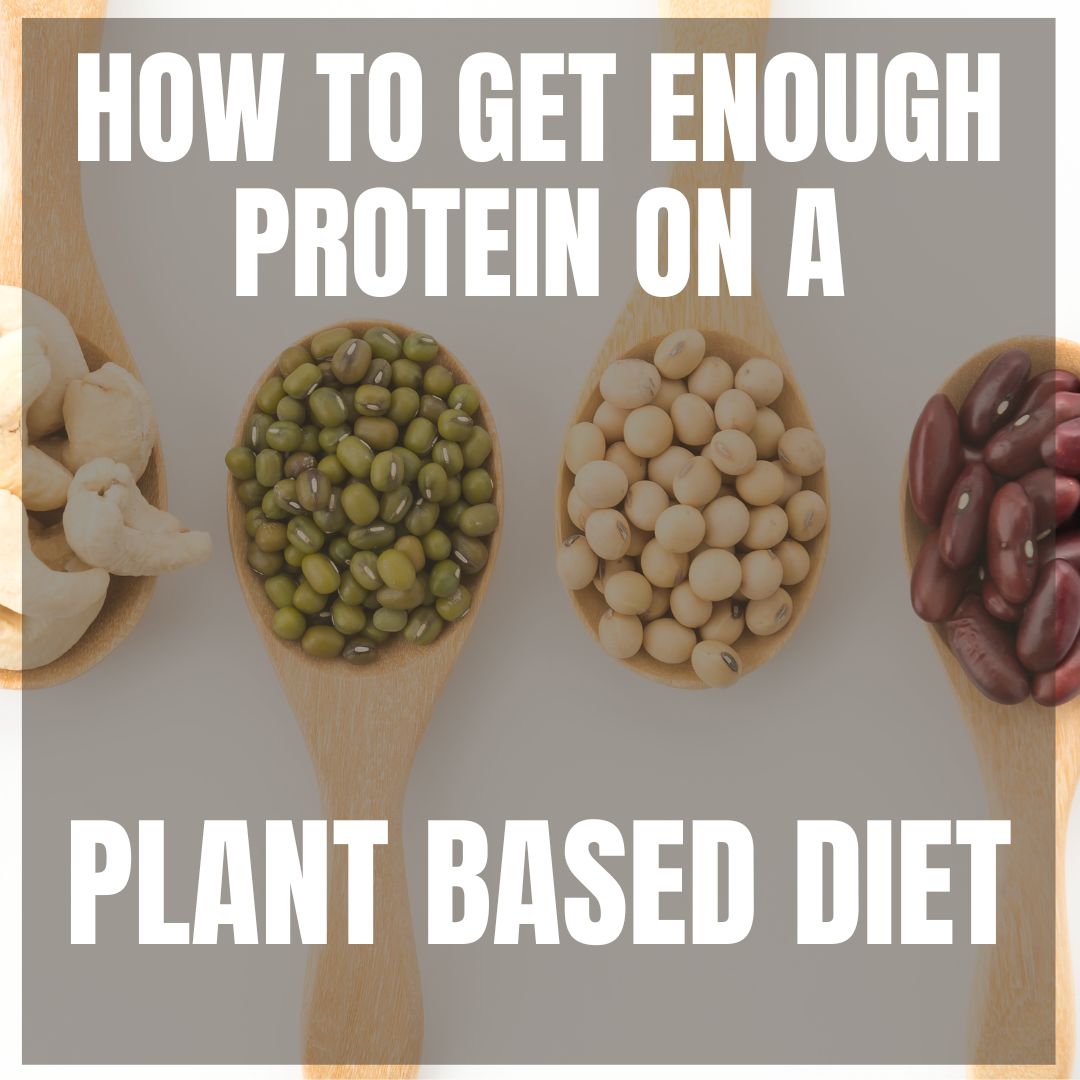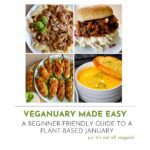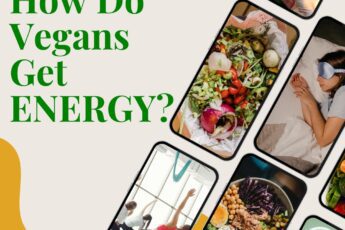Protein – the name brings forth images of bulging biceps and sizzling steaks. But what if you’re plant-powered? Can you get enough protein without animal products? Fear not, veggie warriors, for the plant kingdom bursts with protein punch! But before we dig into deliciousness, let’s understand why protein matters and how to get enough protein on a plant-based diet.
Why Protein is Essential
Protein plays a vital role in building and repairing tissues, producing enzymes and hormones, and supporting overall health. While many people associate protein with animal-based foods, there are plenty of plant-based options to meet your protein needs. Learning how to get enough protein on a plant-based diet is easier than you think with the right approach.
Protein Needs: How Much is Enough?
The Recommended Dietary Allowance (RDA) for protein is 0.8 grams per kilogram of body weight. For example, a person weighing 150 pounds (68 kilograms) needs about 55 grams of protein daily. Active individuals or athletes may require more.
Use this PROTEIN CALCULATOR to determine your specific needs based on weight, activity level, and goals. Knowing how to get enough protein on a plant-based diet starts with understanding your individual requirements.
High-Protein Plant-Based Foods
Incorporating a variety of plant-based foods ensures you’re getting all the essential amino acids. Let’s explore a vibrant pantry of protein powerhouses and how to get enough protein on a plant-based diet::
- Legumes: Lentils, chickpeas, black beans, and kidney beans (15-18 grams per cup).
- Soy Products: Tofu, tempeh, edamame, and soy milk (8-20 grams per serving).
- Grains: Quinoa, farro, bulgur, and oats (5-8 grams per cup cooked).
- Nuts and Seeds: Almonds, chia seeds, flaxseeds, and pumpkin seeds (5-10 grams per ounce).
- Plant-Based Meat Alternatives: Products like Impossible burgers, Meati steaks, and Beyond Meat (15-20 grams per serving).
Legumes:
Beans, lentils, chickpeas, and peas – these champions pack protein alongside fiber, complex carbs, and iron. Lentil stew for lunch, hummus on whole-wheat crackers for a snack, or a spicy black bean burger for dinner – legumes are your plant-powered besties.
- Lentils: 18.5g protein per 100g (a protein powerhouse!)
- Black Beans: 15.2g protein per 100g (perfect for Tex-Mex feasts!)
- Chickpeas: 14.5g protein per 100g (hummus heaven!)
- Kidney Beans: 14.4g protein per 100g (a chili essential!)
- Pinto Beans: 14.3g protein per 100g (versatile and delicious!)
Soy Products:
Tofu, tempeh (pronounced “tem-pay”), and seitan (pronounced “say-tan”) aren’t just protein powerhouses; they’re culinary chameleons! Tofu’s blank canvas absorbs marinades and spices like a dream, tempeh’s hearty texture stands up to grilling and stir-fries, and seitan’s satisfying chew mimics meat in a plant-powered way. From breakfast scrambles to fajita fillings, these versatile heroes let you recreate your favorite dishes with a plant-based twist. For some, exploring these “mysterious” foods can seem a little daunting, but once you find the right recipe, you will see they are not so mysterious after all. Take a deep dive into ways to prep tofu on our TOFU 101 GUIDE as a starting point.
- Tofu: 8.0g protein per 100g (depending on variety, can range from 4-12g)
- Tempeh: 19.1g protein per 100g (a true protein powerhouse!)
- Seitan: 25.0g protein per 100g (the highest protein on this list!)
Nuts & Seeds:
These tiny giants are protein and healthy fat treasures. Sprinkle chia seeds on your oatmeal, munch on almonds as a pre-workout snack, or stir hemp seeds into a smoothie. Remember, moderation is key, as nuts and seeds are calorie-dense.
- Almonds: 6.0g protein per 100g (a flavorful and satisfying snack)
- Pistachios: 5.8 grams of protein per 100g (a real treat – get them shelled)
- Cashews: 5.3 grams of protein per 100g (a base in many plant-based dishes)
- Chia Seeds: 5.1g protein per 100g (a fiber and protein powerhouse!)
- Hemp Seeds: 5.0g protein per 100g (versatile and packed with essential fats)
- Sunflower Seeds: 6.5g protein per 100g (perfect for salads and trail mix)
- Pumpkin Seeds: 7.2g protein per 100g (roasted or raw, they’re a treat!)
Whole Grains:
Quinoa, brown rice, and oats, offer protein along with sustained energy. Start your day with a protein-packed oatmeal bowl, whip up a quinoa salad for lunch, or enjoy a slice of whole-wheat toast with nut butter. Just by incorporating these staples alone, you can eat plant-based for breakfast and lunch without much extra thought into it. These PRINTABLE MEAL GUIDES for Weekday Breakfasts and Lunches incorporate some of these whole grains so that you can have a plant-based power-packed go-to every morning.
- Oats: 6.9g protein per 100g (a breakfast favorite with endless possibilities!)
- Quinoa: 8.0g protein per 100g (an ancient grain with all nine essential amino acids!)
- Brown Rice: 2.8g protein per 100g (a versatile and healthy side dish)
Vegetables:
Even these low-calorie wonders contribute protein! Broccoli, spinach, asparagus, and Brussels sprouts are your leafy allies. Roast them, steam them, or toss them into a stir-fry – veggies add variety and protein to your plate.
- Broccoli: 3.4g protein per 100g (a vitamin C powerhouse with bonus protein!)
- Brussels Sprouts: 3.4g protein per 100g (roasted to perfection, they’re a Brussels bash!)
- Sweet Corn: 3.8g protein per 100g (who doesn’t love this complex carbohydrate)
- Asparagus: 2.1g protein per 100g (a delicate and delicious spring veggie)
- Spinach: 2.9g protein per 100g (Popeye’s leafy secret weapon!)
Mock Meats:
The rising stars of the plant-based world! From juicy Impossible Burgers to sizzle-worthy Chicken-less Chick’n nuggets, these convenient options mimic the taste and texture of their animal counterparts, making the transition to plant-powered meals a breeze. For many individuals, the plant-based journey begins by embracing familiar tastes, opting for these types of alternatives for traditional foods – so your plate looks similar to the former eating habits. This full collection of PLANT-BASED SWAPS gets you started with options so that you can try several to find the ones that you like the best. While they’re definitely crowd-pleasers, let’s be real – they might not be nutritional champions like whole plant foods, so keep that in mind while you are planning your meals.
Complete Proteins:
The last piece of the plant-based protein puzzle is to address the idea of “complete proteins.” A complete protein refers to a food that contains all nine essential amino acids required by the human body, as these amino acids must be obtained through the diet and are crucial for various physiological functions.
Many animal protein sources contain all 9 of these essential amino acids, whereas plant-based proteins usually need to combine with other plant-based whole foods to become “complete.” While the science behind complete proteins is accurate, the concept that plant-based eaters have to calculate each protein is a relatively debunked or demystified concept. All of the protein sources listed above hold a unique set of amino acids that accumulate over the whole day as you eat them.
As you enjoy all of these diverse plant-based foods, your body naturally combines them to create the complete picture it needs. There are no complicated equations, just a healthy, balanced diet doing its magic. Here are a few simple ways to answer how to get enough protein on a plant-based diet:
- Rice and beans
- Hummus and whole-grain pita
- Peanut butter on whole-grain toast
Tips for Meeting Your Protein Needs
- Plan Ahead: Include a protein source in every meal and snack. For example, add tofu to stir-fries or sprinkle chia seeds on your morning oatmeal.
- Snack Smart: Keep protein-packed snacks like trail mix, roasted chickpeas, or protein bars on hand.
- Utilize Protein Powders: Opt for plant-based protein powders made from pea, hemp, or brown rice for an easy boost.
- Cook with Versatile Ingredients: Incorporate versatile ingredients like lentils, quinoa, or tempeh into soups, salads, and stews.
Sample High-Protein Plant-Based Meal Plan
If you’re wondering how to get enough protein on a plant-based diet, a sample meal plan can help guide you.
- Breakfast: Smoothie with soy milk, a banana, spinach, and a scoop of pea protein powder (20 grams). Lunch: Quinoa salad with black beans, roasted vegetables, and tahini dressing (25 grams).
- Snack: Apple slices with almond butter (8 grams).
- Dinner: Lentil and veggie stir-fry over brown rice (30 grams).
- Dessert: So Delicious Non-Dairy Ice Cream with crushed almonds (5 grams).
Myths About Plant-Based Protein
Myth: Plant-based diets don’t provide enough protein.
Truth: With proper planning, plant-based diets can easily meet or exceed protein requirements.
Myth: You need to eat complete proteins at every meal.
Truth: Your body pools amino acids throughout the day, so combining foods at each meal isn’t necessary.
Protein-Rich Recipes to Try
Here are some delicious recipes from my website to help you hit your protein goals:
There you have it, it’s easier to get enough protein on a plant-based diet than you think! Planning your meals initially might take some time, but soon, incorporating protein-rich plants becomes second nature. Explore new recipes, read labels, and use online resources to create diverse and delicious plant-based meals. How to get enough protein on a plant-based diet will become something you no longer think about. You’ll be surprised by the abundance and satisfaction that awaits.
So, ditch the protein myths and embrace the power of plants. Remember, it’s not about replicating animal sources, but about building a vibrant and healthy plate with protein at its core. Go forth, fellow plant-powered warriors, and conquer your dietary goals with every delicious bite! Now you know how to get enough protein on a plant-based diet.






